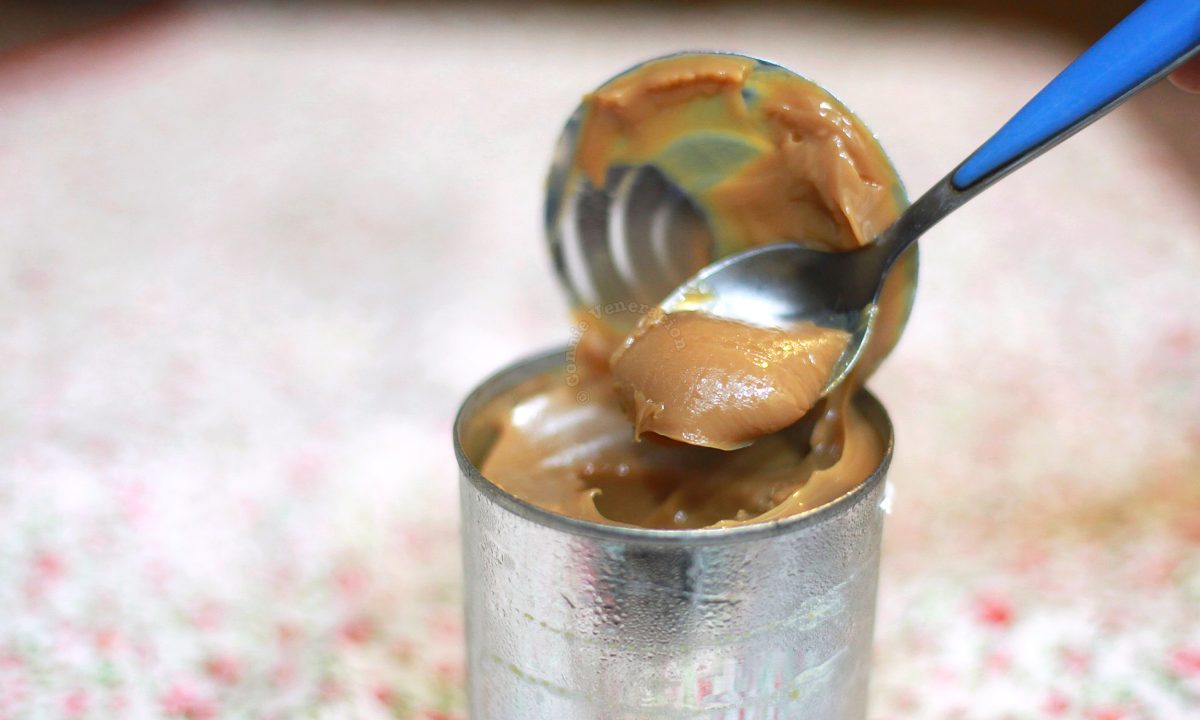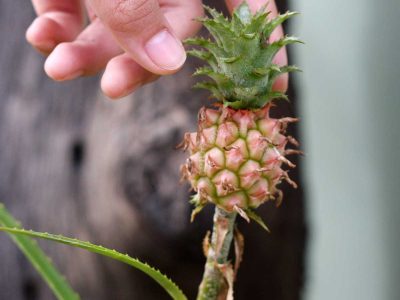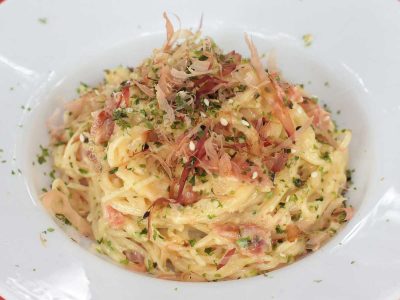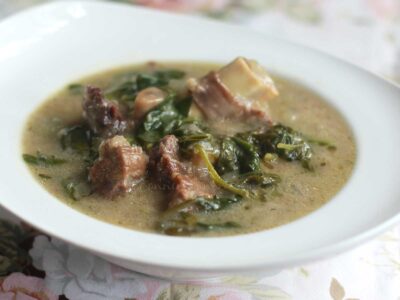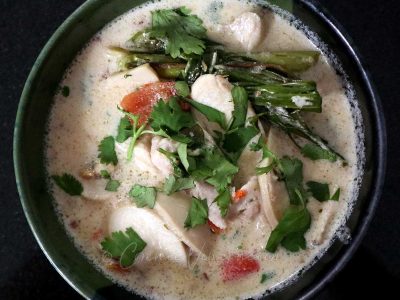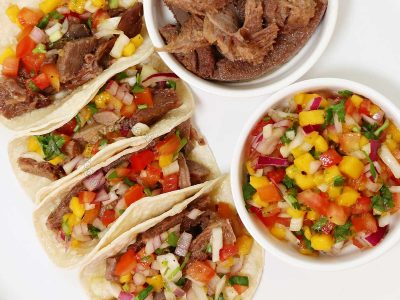What is dulce de leche?
It’s a confection that traces its roots in Chile where it is called manjar blanco. Milk and sugar are boiled with a vanilla bean and stirred with a wooden spoon until thick. From Chile, the confection spread to Latin America where it was adapted with regional variations, and came to be known by other names. In Bolivia and Peru, it is also called manjar blanco. In Colombia, it is called arequipe and, in Mexico, it is cajeta.
When and where exactly it was first called dulce de leche, I have no idea. I do know, however that making dulce de leche by simmering an unopened can of sweetened condensed milk in water is for people who don’t have access or don’t have the patience to make it the traditional way.
Simmering an unopened can of sweetened condensed milk in water can be done in two ways. Well, three if you add the pressure cooker method but since I have never tried that, I will skip that part.
Make dulce de leche on the stovetop
There is a famous legend that has given dulce de leche the nickname “Dangerous Pudding” when cooked on the stovetop. I’m referring to the claims that boiling the unopened can of milk can make it burst and cause a bad kitchen accident and human injuries.

The truth is, everyone who has relayed the “danger” to me were people who have never even tried making dulce de leche this way. In fact, I’ve never heard nor read a first hand account of a can of condensed milk exploding while simmering in water.
So, if you want to try and make dulce de leche on the stovetop, here are a few things to ensure that your dulce de leche making is hazard free:
1. Use a deep pot so that the cans are fully submerged in water. Ideally, the water level should be at least an inch higher than the cans. And, incidentally, you don’t need to stand the cans upright inside the pot. I put them in sideways so that they can roll and move around during cooking.
2. Use a heavy lid for the pot that fits snugly to avoid as much evaporation as possible. And just in case something goes wrong, a heavy lid can absorb a lot of the impact if the can should explode.
3. The most important part: Check the water level every twenty minutes or so. Add more water if the water level is less than half an inch higher than the cans.
Make dulce de leche in the slow cooker
The beauty of making dulce de leche in the slow cooker is that there is no need to keep topping up the water. There is very little evaporation in the slow cooker so you can just leave the cans of milk there overnight.
Put the cans of sweetened condensed milk in the slow cooker and pour in HOT water. As with making dulce de leche on the stovetop, the water level has to be at least an inch higher than the cans. Set the heat to LOW.
How long does the can of milk have to simmer in water before the milk turns to caramel?
On the stovetop, two to three hours. In the slow cooker, six to eight hours. See, the longer the simmering, the thicker the caramel.
Three reasons why you have to cool the dulce de leche before opening the can
- You’ll burn your hand holding the hot can to open it.
- The very hot caramel will ooze out once you open the can. Even after letting the can sit on the counter for an hour, for as long as the caramel inside is still quite hot, it will ooze out once the can is punctured. We’ve tried that in the past, those times when we just couldn’t wait, and the result was a mess.
- The dulce de leche continues to firm up as it cools. So, you won’t know the exact texture of the dulce de leche you made until it has cooled slowly to room temperature.

